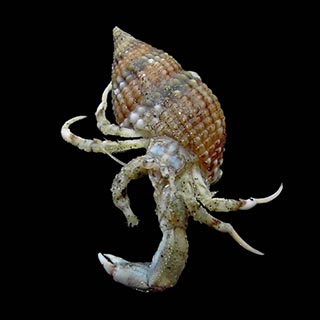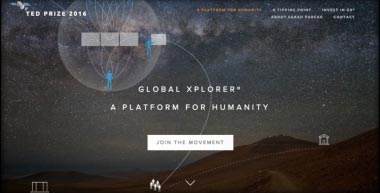Digging up History: from Sea to Sand to Space Archeology
New infrared images from satellites 400 miles in space now allow archeologists to see ancient sites on earth to map humanity!

Photo copyright © Hand Hillewaert, CC BY-SA 4.0.
Every summer, as a child, my family and I would take a vacation to the outer banks of North Carolina, where we relaxed on the beautiful beaches of Hatteras Island. My childhood activities included making sandcastles, flying kites, and unsuccessfully battling gigantic waves that could reach more than eight feet in height.
I also enjoyed collecting seashells. At that age, I could not have appreciated that each shell held its own little history. I did not exactly know these small, often striking objects could be thousands of years old. I just enjoyed collecting the shells because, no matter what, I would never find any two alike.
Lately, I have gotten more curious about where these shells. What are they? When and where could they have formed?
I have learned, in fact, there are 50,000 known species of mollusk, the creatures responsible for the vast array of uniquely formed calcium carbonate homes we know as seashells. They are fossils.
A fossil is the remains or impression of a prehistoric organism preserved in petrified form. That means, in a way I was acting as an archaeologist when I collected those shells. However, if archaeology were as simple as waiting for a wave to wash up small rocks and shells, then everyone would be in the business of science.
Thus it was in times past, a keen observer of the natural world might unearth great mysteries, unexplainable by the present state of knowledge. In the late 15th century, world-famous polymath Leonardo Vinci became interested in mollusk shells when he found them in the mountains of Lombardy, outside of Milan. These shells found at great heights, and far from Italy's beaches, must be a mysterious manifestation of early geological events, Leonardo conjectured in one of his famous codices, observing that, "...the shells in Lombardy are at four levels, and thus it is everywhere, having been made at various times."
Leonardo further wrote, "Since things are much more ancient than letters, it is no marvel if, in our day, no records exist of these seas having covered so many countries... But sufficient for us is the testimony of things created in the salt waters, and found again in high mountains far from the seas."
In fact, as Leonardo evidenced, the science of archaeology today is a multifaceted profession requiring the skills of a modern-day polymath. It combines the study of material remains such as fossil relics, artifacts, and anthropology from land and sea with scientific dating, forensic science, history and, now, satellite imaging. Archaeologist's main objectives are to locate, excavate, and evaluate, and location can be the most difficult challenge by far.
Archeology's real estate challenge: location, location, location
A strong understanding of history helps archeologists to look in the right places, for starters. however, the history books are not always explicitly specific about the location of sites of interest. The chance of making an extraordinary find is what keeps archaeologist focused, yet sometimes months and months without a hit can be discouraging.

Photo courtesy of The TED Talks
Enter Sarah Parcak, revolutionary archaeologist and winner of the 2016 TED Prize. Dr. Parcak's technique of using satellite imaging to locate ancient sites made the locating part of archaeology a little bit easier. Infrared imaging from satellites is used to identify subtle changes to the terrain indicating the presence of manmade objects. This is a cost-effective and more time efficient way of discovering what lies beneath the earth's surface. The only alternative is an aerial shot with an aircraft, which will not result in the same quality and is far more expensive for obvious reasons.
In her complete satellite mapping of Egypt, she identified countless forgotten tombs and lost settlements. With a bachelor degree in Egyptology and Archaeological studies from Yale University and her Ph.D. from the University of Cambridge, Parcak wrote the first textbook on satellite archaeology.
Along with the million-dollar TED Prize, recipients are prompted to make a wish. Parcak's wish? "To discover the millions of unknown archaeological sites across the globe. By creating a 21st century army of global explorers, we'll find and protect the world's hidden heritage, which contains humankind's collective resilience and creativity."
Much of her work focuses on protecting archaic sites from looters and most recently terrorist organizations such as ISIS that seek to destroy ancient cultural sites. In this, Sarah Parcak's career begins to resemble that of the fabled, fictitious explorer Indiana Jones, protecting irreplaceable historic treasures. In an effort to democratize, the process of archaeological discoveries, Parcak has developed a platform called Global Xplorer, which will utilize the power of the crowd to allow anyone to participate in uncovering the rest of earth's surface, 90 percent of which has yet to be explored. Her work informs us that the earth has many more stories that remain to be told about the peoples and creatures who came before us, and that sometimes, the best clues to find them come from high above.

Screenshot courtesy of GlobalXplorer.org
Knowing how so many clues add up to our history, my days at the seashore look much the same, but the experience is richer by far. Those aren't just shells washed up by some passing wave. They are evidence of prehistoric life that, if I can follow their trail, will tell me a story all their own.
Want to Learn More?
- "Leonardo da Vinci" , 30 Nov, -0001. http://www.ucmp.berkeley.edu/history/vinci.html. Accessed on 11 Mar, 2016.
- "Cape Hatteras Surf Report, Surf Forecast and Live Surf Webcams" MagicSeaweed, 30 Nov, -0001. http://magicseaweed.com/Cape-Hatteras-Surf-Report/399/. Accessed on 11 Mar, 2016.
- "Mollusk Fossils - Seashells" CrystaLinks, 30 Nov, -0001. http://www.crystalinks.com/fossilmollusks.html. Accessed on 11 Mar, 2016.
- Schmidt, Gavin. "Cold Climates, Warm Climates: How Can We Tell Past Temperatures?" NASA Goddard Institute for Space Studies, 1 Jan, 1999. http://www.giss.nasa.gov/research/briefs/schmidt_01/. Accessed on 11 Mar, 2016.
- May, Kate Torgovnick. "It's time we inverted the pyramids: Satellite archaeologist Sarah Parcak invites the world into her work" TED Blog, 16 Feb, 2016. http://blog.ted.com/sarah-parcak-shares-her-ted-prize-wish/. Accessed on 11 Mar, 2016.
- "Sarah Parcak" TED: Ideas Worth Spreading, 30 Nov, -0001. https://www.ted.com/speakers/sarah_parcak. Accessed on 11 Mar, 2016.
- "The Wonders of the Seas: Mollusks" Oceanic Research Group, 5 Jun, 2007. http://www.oceanicresearch.org/education/wonders/mollusk.html. Accessed on 11 Mar, 2016.
- "Sarah Parcak" Wikipedia, 30 Nov, -0001. https://www.wikiwand.com/en/Sarah_Parcak. Accessed on 11 Mar, 2016.